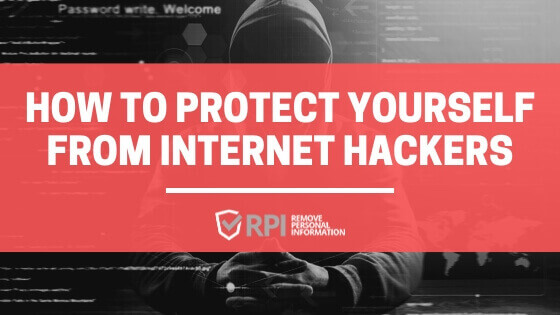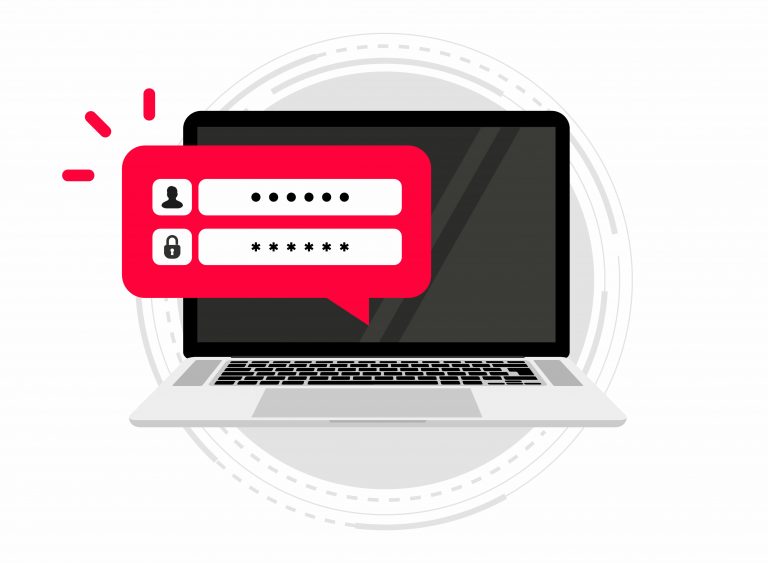Securing Your Health Data: Privacy Measures in Telemedicine
January 25, 2024Telemedicine has become an increasingly popular option for accessing healthcare services, allowing patients to consult with healthcare providers remotely. What…

There is no surefire way on how to protect yourself from internet hackers, however, there are steps you can take to decrease the probability of being a victim.
Identity theft isn’t a problem until it happens to you and some other sufferer can tell you it’s no laughing matter. Some people today feel that identity theft won’t ever happen to them. But if you do not take action on how to protect yourself from internet hackers when you get online, soon enough you might be telling your personal story of identity theft.
The more you know the way the criminal occupies an identity, the better the chance you need to protect yourself from online identity theft. While nothing is foolproof, here are a couple of things that you can do to protect yourself from online identity theft.
Do not use the exact same password on all your accounts. A burglar can wipe you out quite quickly using one password which works on each account you have.
Maintain all your passwords as confidential as possible. Banks or financial institutions not email you and ask you to log in to your account and confirm your password. This frequent online scam costs victims millions of dollars annually and you need to know of it so that it will not occur to you.
In case your computer picks a spyware virus, then a hacker has what that he wants to steal your identity in addition to all your cash. Most computer users don’t have any idea why or how they obtained it but it makes your internet security tremendously vulnerable. Spyware protection software is quite reasonably priced and can be equally as crucial as antivirus applications.
Other ways to protect yourself from online identity theft contain all transactions you create online. Before you create an internet order with your credit card, then ensure the website has a secure and encrypted webpage. Secure pages begin with https rather than HTTP, and an image of a little gold lock is displayed in the lower part of your display.
LEARN MORE FAQ ABOUT REMOVEPERSONALINFORMATION HERE
To validate the name of this server which appears on the electronic certificate, double click on the golden lock icon, and check the title that appears alongside”Issued to”. If the name appearing alongside”Issued to” differs from the title of the website which you’re providing your credit card number to, then leave the site since it’s not protected. Presently, over 1000 law enforcement agencies have immediate online access to nearly 700 000 identity theft complaints. Identity theft is fast becoming the internets worst security nightmare.
Hopefully, these few tips will block you from becoming another victim of the horrible crime. If you would like to shield yourself from online identity theft, your very best defense is avoidance.
Because of Hollywood, most people think a hacker is a person who gains illegal access to a computer and steals breaks or stuff into military networks and launches missiles for fun. These days, a hacker does not need to be a winner from a leading university who breaks into banks and government systems. A hacker could be anybody, even the child next door.
With an ordinary laptop, anyone can download easy software off of the internet to see everything that goes into and from a computer on precisely the exact same network. And the men and women who do so do not always have the best of intentions. Nowadays, the term”hacker” is becoming synonymous with individuals who sit in darkened rooms, anonymously terrorizing the net. Nevertheless, it wasn’t always that way. The original hackers were benign creatures. In fact, they were pupils.
Many of the ancient MIT hacks tended to be more practical jokes. Over time, the word became associated with the burgeoning computer programming landscape at MIT and beyond. For these early pioneers, a hack was a feat of programming art. These actions were greatly respected as they combined professional knowledge using a creative intuition.
Hackers’ motivations vary. For some, it is economic. They make a living through cybercrime. Some have a political or social agenda – their intention is to vandalize high-profile computers to produce a statement. This type of hacker is known as a cracker as their principal purpose is to crack the safety of high profile systems.
When asked by the web site SafeMode.org why he defaces servers, a cracker responded, “High-profile damage gives me an adrenalin rush and after a while, I want another shot, that is why I can’t stop.”
These days, we’re confronted with a new type of cookie – your next-door neighbor. Every single day, thousands of people download easy software tools that enable them to”sniff” wifi connections. Some do this simply to eavesdrop on what others are doing online. Others do so to steal private data in an effort to steal an identity.
Sidejacking is an internet attack method in which a hacker uses packet sniffing to steal a session cookie from a website you just visited. These cookies are generally delivered back to browsers unencrypted, even if the initial site log-in was protected via HTTPS. Anyone listening could steal these biscuits and then use them to access your authenticated web session.
This recently made news since a developer released a Firefox plugin called Firesheep making it easy for a person sitting on an open network (such as a public wifi hotspot) to side jack many popular site sessions.
By way of instance, aside jacket using Firesheep could take over your Facebook session, thereby gaining access to all your sensitive information, and also send viral messages and wall posts to all of your friends.
A DNS cache poisoning attack efficiently changes entries in the sufferer’s copy of the DNS name server, so while he or she types in a legitimate website name, he or she is sent into a fraudulent page.
A man-in-the-middle attack, bucket brigade assault, or Janus attack, is a sort of active eavesdropping in which the attacker makes independent relations together with all the victims and relays connections between them, which makes them believe that they are talking directly to each other over a personal connection when actually the entire conversation is being manipulated by the attacker.
The attacker must have the ability to intercept messages moving between the 2 sufferers and inject new ones. As an example, an attacker inside the reception array of an unencrypted wi-fi access point may fit himself as a man-in-the-middle. Or an attacker can pose as an online bank or merchant, allowing victims to sign in within an SSL connection, then the attacker may log on the actual server with the victim’s data and steal credit card numbers.
Packet sniffers make it possible for eavesdroppers to intercept information sent between your smartphone or laptop and other systems, such as web servers on the Internet. This is the easiest and most basic sort of wireless attack.
Any email, web search, or file you move between computers or open from network locations within an unsecured wireless network can be obtained by a nearby hacker using a sniffer. Sniffing tools are easily available for free on the web and there are 184 videos on YouTube to show budding hackers just how to use them.
Also called mass SQL injection, this is a technique whereby hackers toxin sites by embedding a redirection javascript from legitimate websites previously infected and commanded by hackers. All these javascript redirect the visitor’s computer to servers that contain additional malicious programs that could attack a user’s computer.
Hackers are interested in many kinds of computers online. The following list describes different kinds of targets and their appeal to hackers.
Corporate computers are often heavily fortified so hacking into one has large cachet. Behind corporate firewalls are repositories of consumer information, product information, and sometimes, in the case of a software publisher, the merchandise itself.
Web servers are computers that contain websites. Though some comprise customer financial information, web servers are often targets for vandals because they can be defaced to display data the hacker chooses to the public.
With the ever-growing usage of wifi, laptops are now becoming one of the very hacked apparatus. Everything someone visits online can be exposed to a person using software to”sniff” which connection. The website URL, passwords used to log in to an online banking account, Facebook images, tweets, and an entire immediate message conversation can be exposed. It is the easiest type of hacking since it requires little skill.
Tablets, mobile phones, and other mobile-ready devices are just as popular as notebooks are at wifi hotspots. A hacker in a public hotspot can observe a mobile device, as well as all data going into and from it, as readily as he can a notebook.
The simple reality is that anyone connecting to the internet is vulnerable to being hacked.
Sniffing attacks would be the most dangerous, as firewalls and anti-virus software cannot help. Just a private VPN can protect someone out of a sniffer. The prospective victim, if attached to a private VPN, has all their data routed via a secure server, which makes it impossible for the hacker to sniff. A user that has a secure VPN can surf as if he or she’s invisible to hackers.
Complete the form below if you are interested in learning more. We appreciate your taking the time out of your day to read our blog. Remember, we are here to help you improve the way others view you online. All solutions are 100% guaranteed, what do you have to lose? Take back control of your online privacy today.

Telemedicine has become an increasingly popular option for accessing healthcare services, allowing patients to consult with healthcare providers remotely. What…

In a world where cyber threats are becoming increasingly sophisticated, the importance of having strong passwords cannot be overstated. But…

Are you looking for a new job while still employed? Discreet job searching online is the key to keeping your…